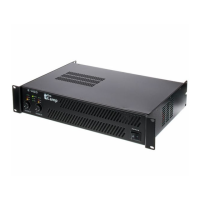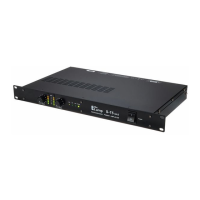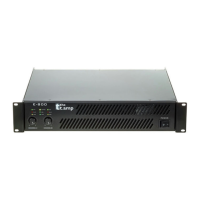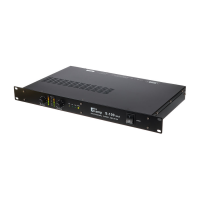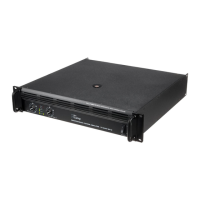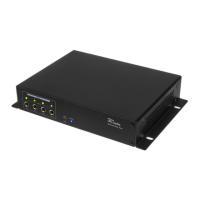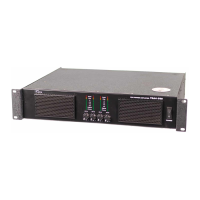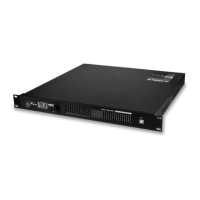
Do you have a question about the thomann the t.amp Quadro 500 DSP and is the answer not in the manual?
Find more details and resources on the manufacturer's website.
Explains symbols, formatting, and signal words used throughout the manual for clarity.
Defines the meaning of various warning symbols and signal words used in safety instructions.
Specifies intended use and required user abilities for safe operation.
Safety warning regarding choking hazards from packaging and small parts for children.
DANGER warnings about high voltages inside and short-circuit risks from improper cabling.
CAUTION regarding potential hearing damage from high volume levels.
NOTICE on indoor use, moisture, sunlight, power supply voltage checks, and unplugging.
NOTICE about magnetic fields affecting devices and potential floor staining from rubber feet.
Highlights the 4-channel Class D power amplifier with integrated digital signal processor.
Details XLR signal inputs, lockable speaker outputs, and USB port for PC connection.
Specifies the 19-inch rack-mountable form factor and 1 RU height.
Covers extensive adjustment capabilities for room and source adaptation.
Instructions for unpacking, checking for transportation damage, and handling packaging.
Guidance on making connections with the device off, using quality cables, and managing them.
Details on mounting the unit in a standard 19-inch rack.
Overview of front panel components including POWER, Display, and Functions Control.
Description of the main switch for powering the device on and off.
Details on what the display shows, such as input channel levels.
Explains the rotary control for menu navigation, value adjustment, and selection.
Information on using the USB port for computer connection and driver installation.
Details the rear panel connections including INPUTs, OUTPUTs, Breaker, and Power connector.
Specifications for the four signal inputs using XLR sockets.
Details on the lockable panel sockets (Speaker Twist) for loudspeaker connection.
Explanation of the resettable fuse for circuit protection.
Description of the IEC chassis plug for the mains power supply.
How the display shows levels and how to adjust input volume and mute.
Step-by-step guide to select channels, adjust levels, or mute inputs.
Instructions for accessing and navigating the main menu using the Functions Control.
List and brief description of available menu items like ROUTING, MUTE, DELAY.
Details on EQ, Compressor, Presets, and Noise Gate settings within the menu.
Covers system settings, work modes (parallel, bridged, linked), PIN, TEMP, NAME, and FIRMWARE.
Details amplifier class, input/output types, and impedance.
Specifications for output power at different impedances and frequency response.
Information on signal-to-noise ratio, total harmonic distortion (THD), and damping factor.
Key electrical performance parameters including sensitivity, gain, and latency.
Specifications for power consumption, physical dimensions, and unit weight.
Defines the recommended temperature range and humidity for operation.
Visual representation of the internal electronic components and signal paths.
Further specifications like power per channel, channels, rack height, and 2Ω stability.
Advice on choosing appropriate cables and plugs for optimal performance.
Explanation of balanced (XLR) versus unbalanced (instrument) signal transmission.
Detailed pin assignment for balanced XLR audio connectors.
Detailed pin assignment for Speaker Twist loudspeaker connectors.
Instructions for safely cleaning the device's fan grids using appropriate agents.
Recommendations for environmentally friendly disposal of packaging materials.
Guidance on proper disposal of the electronic device according to WEEE regulations.
